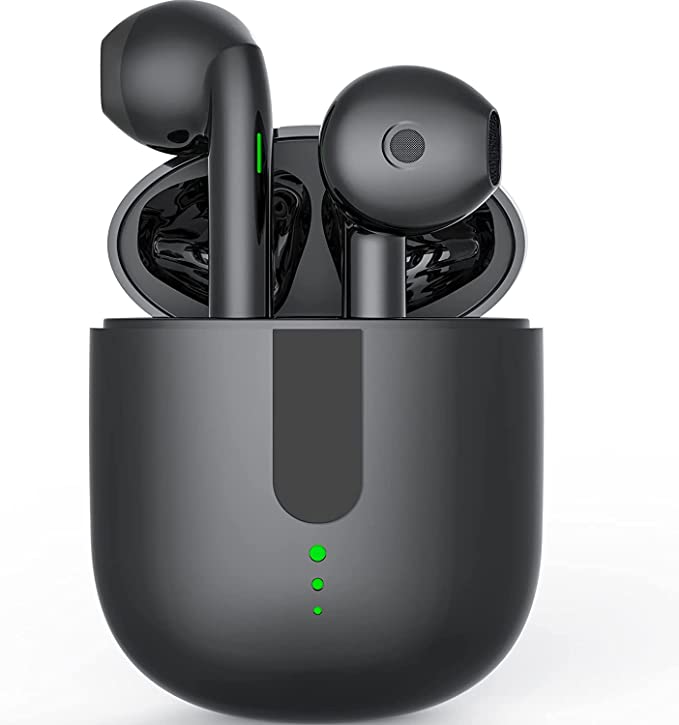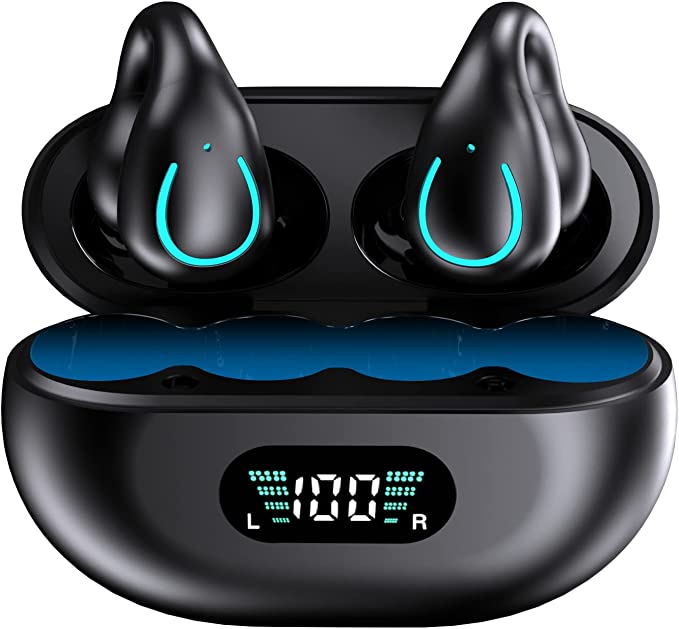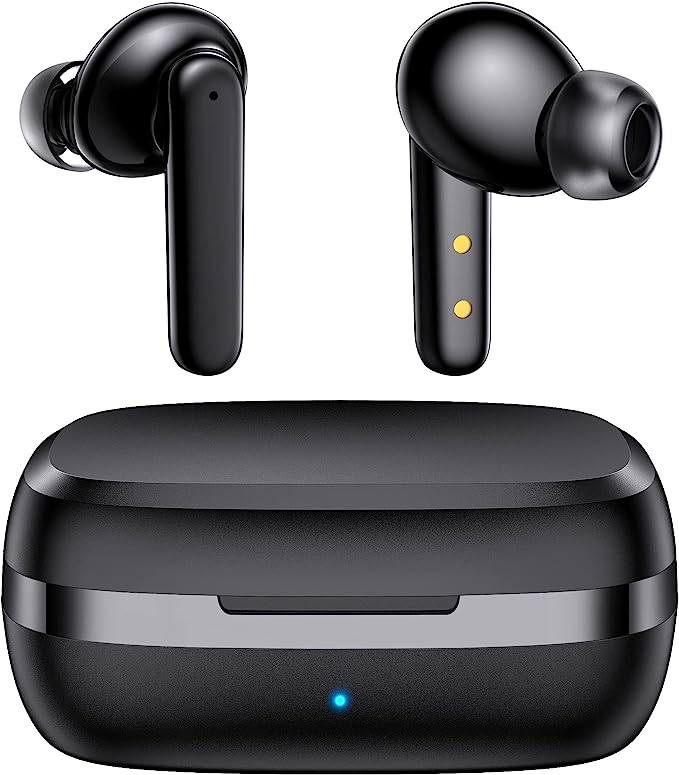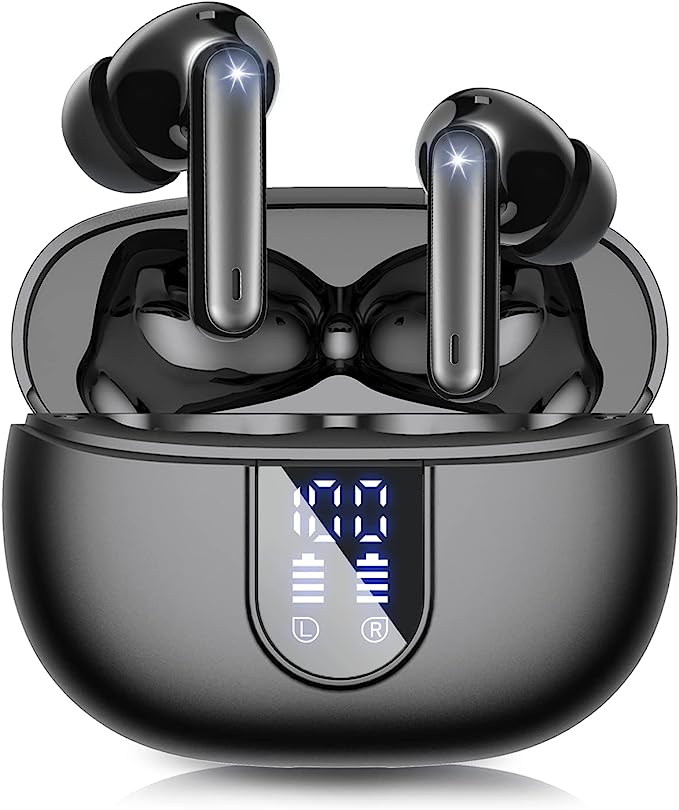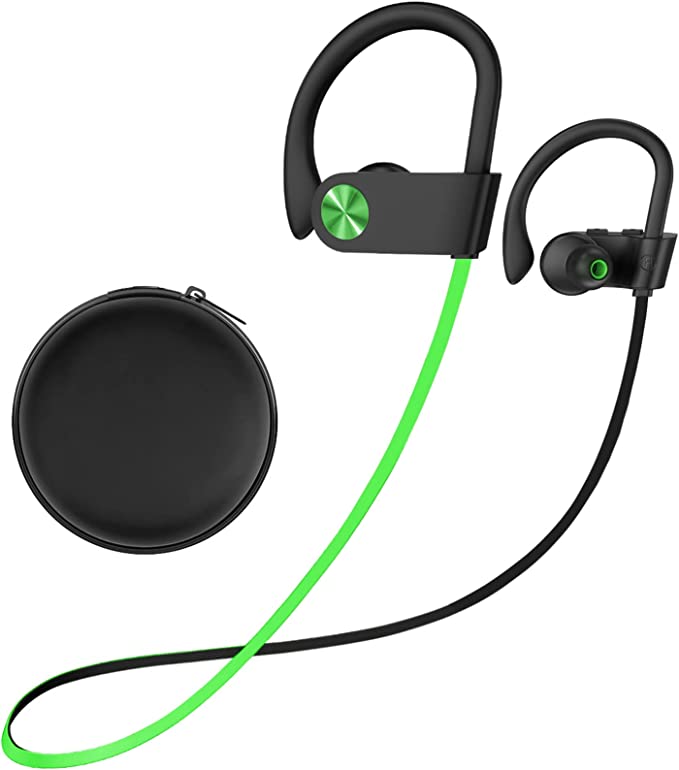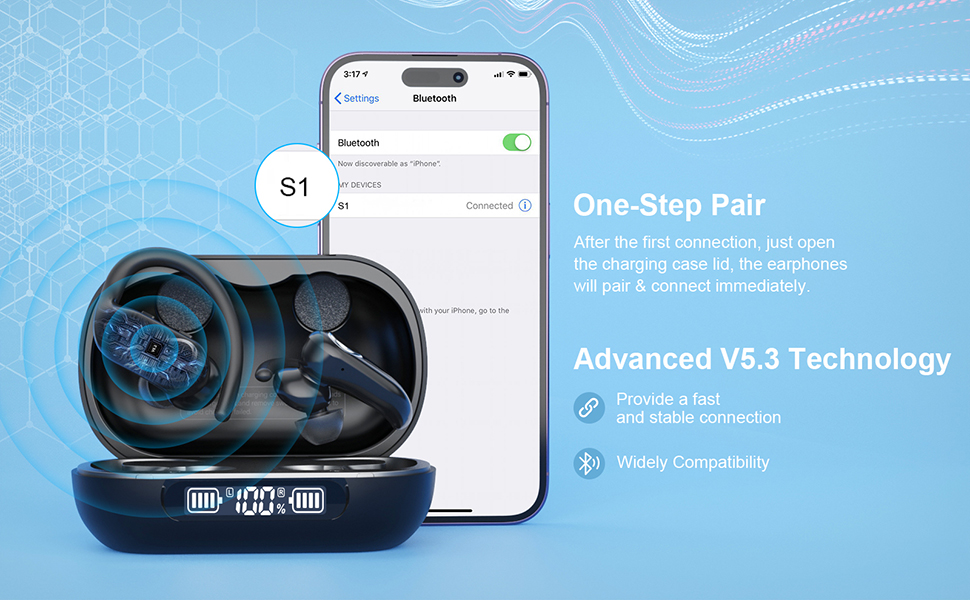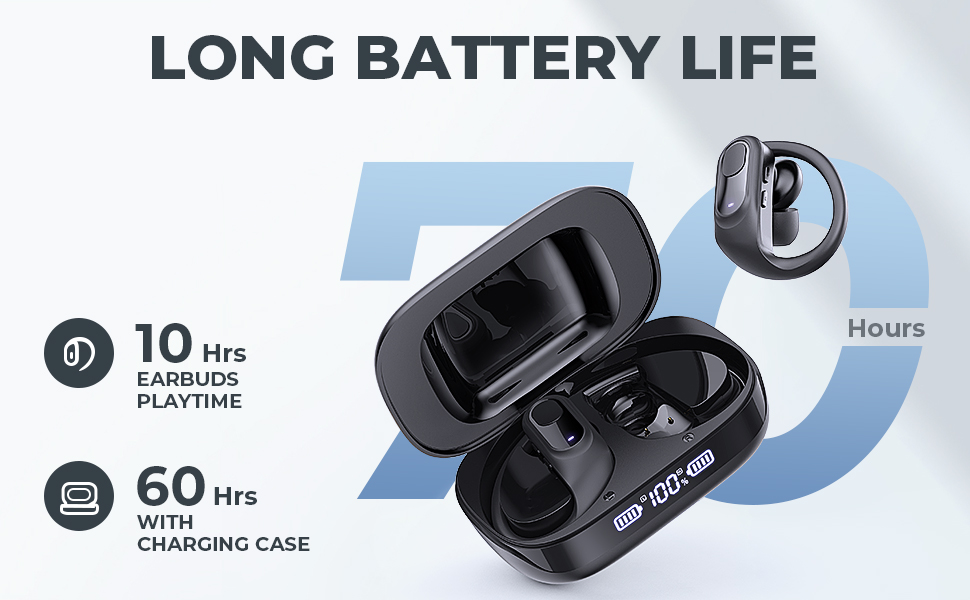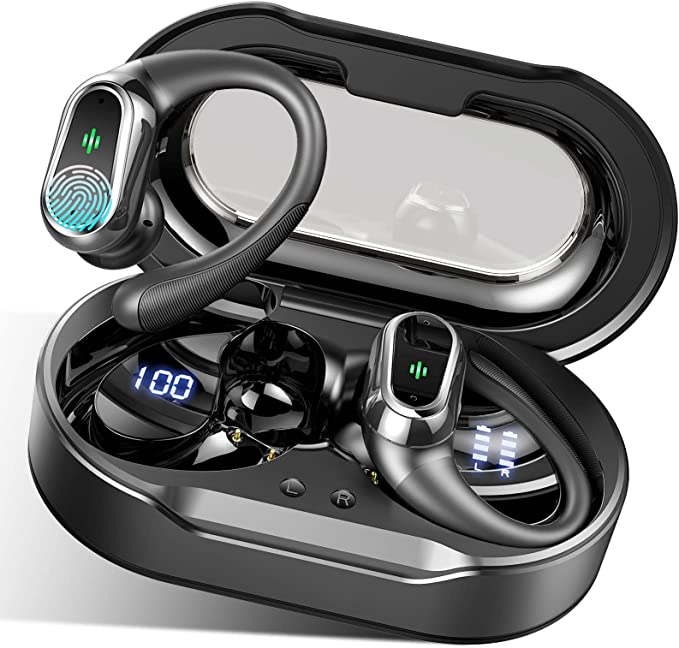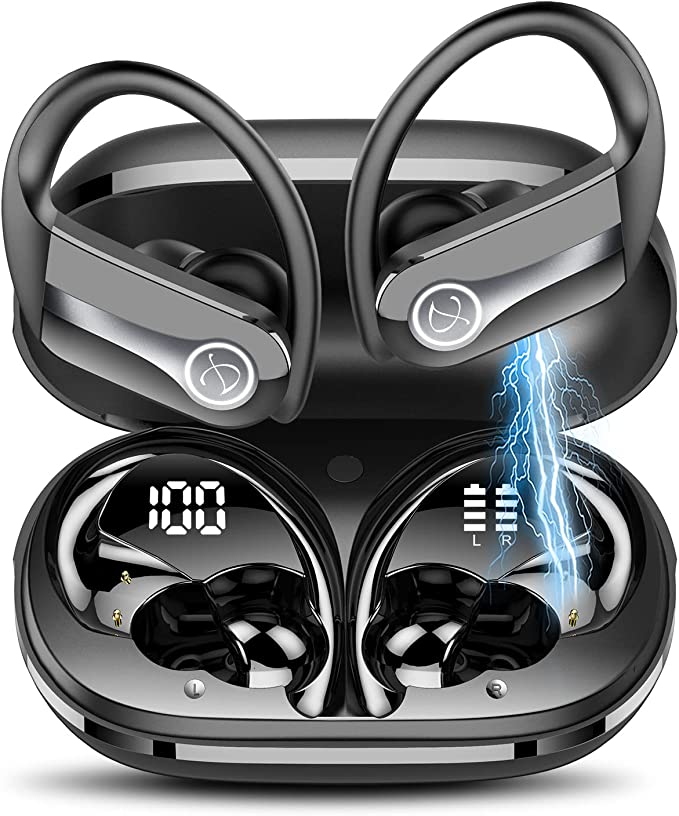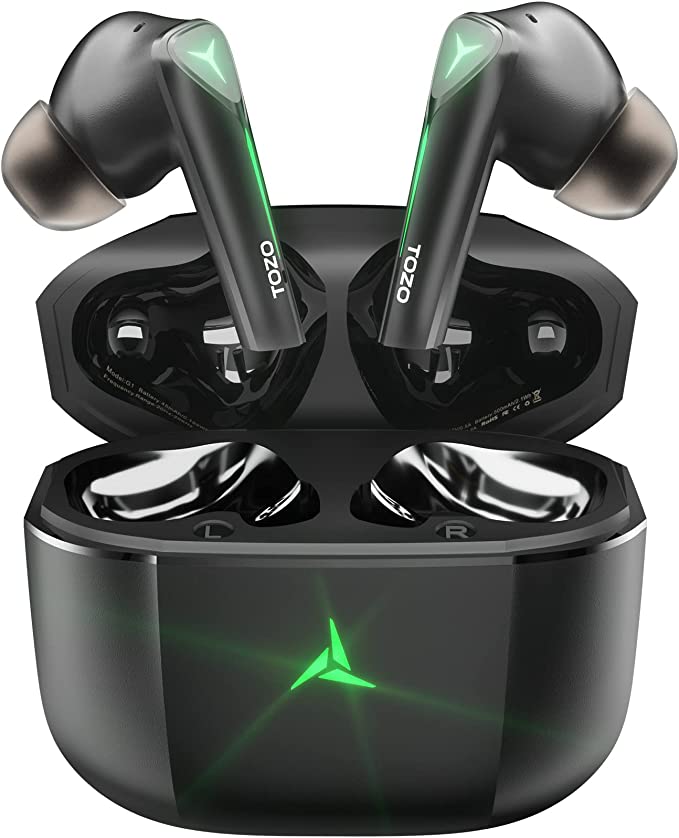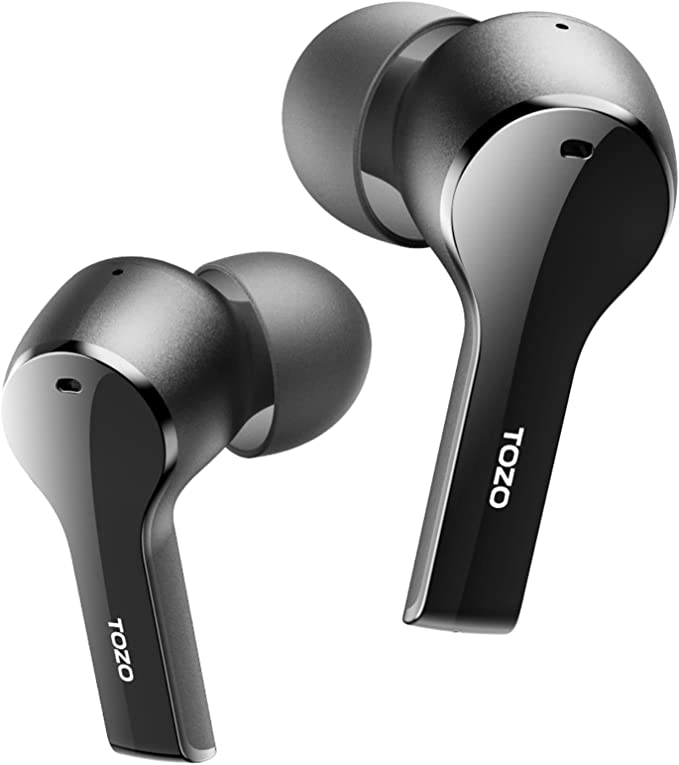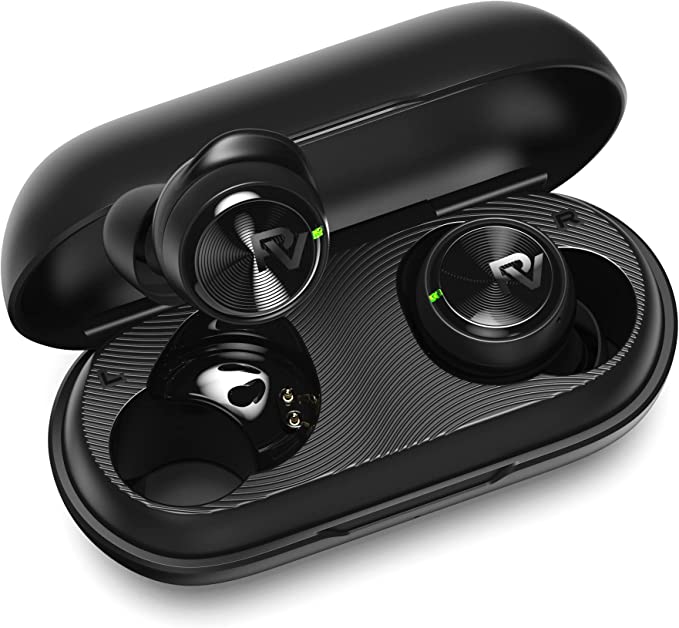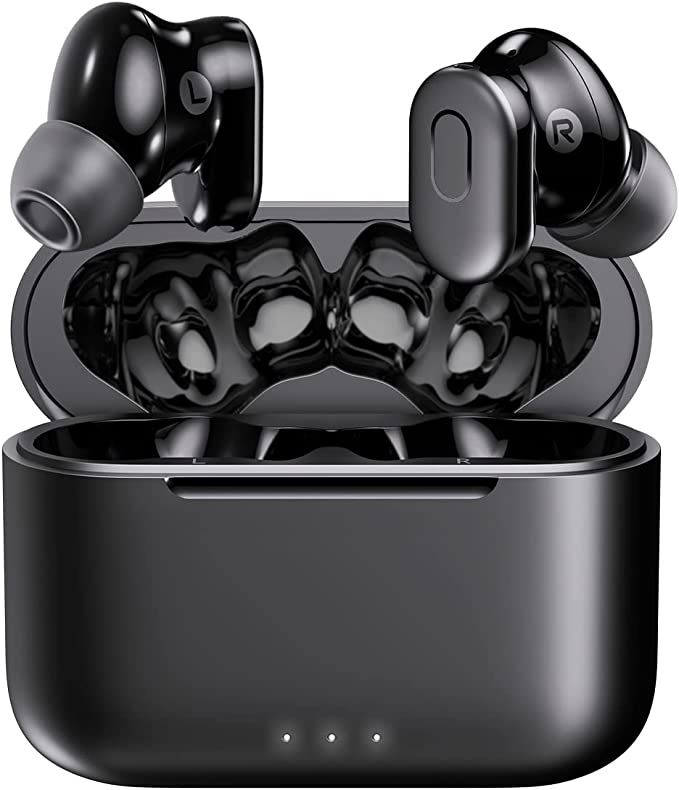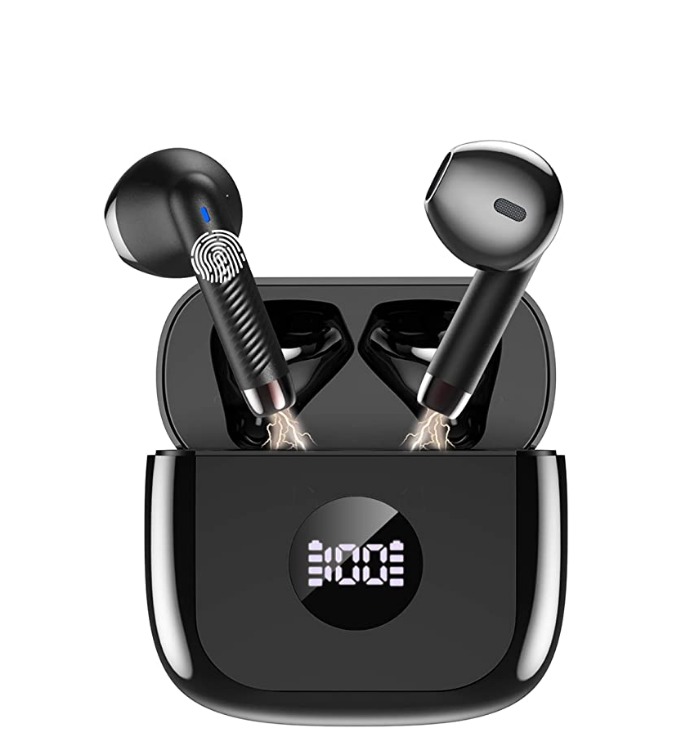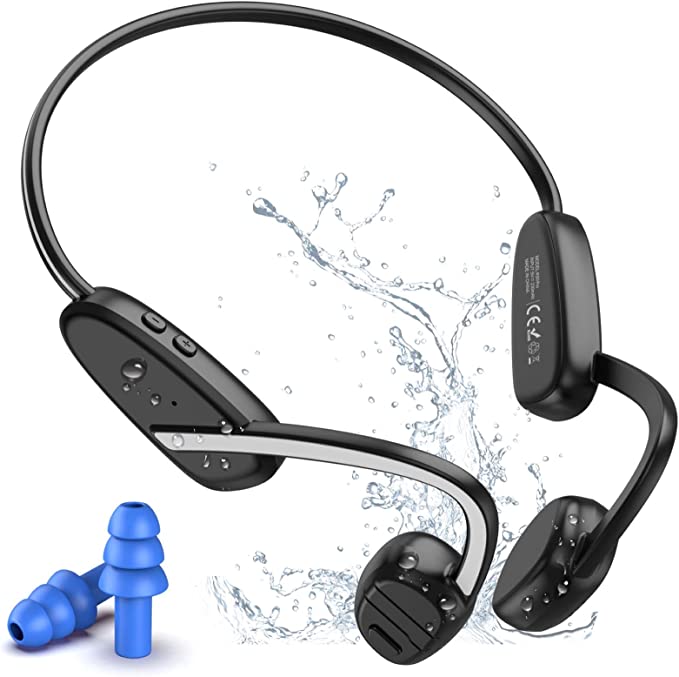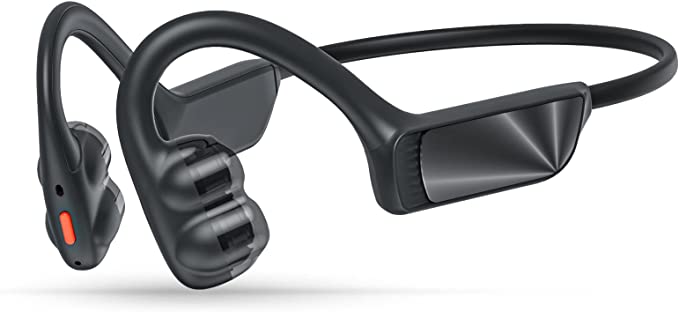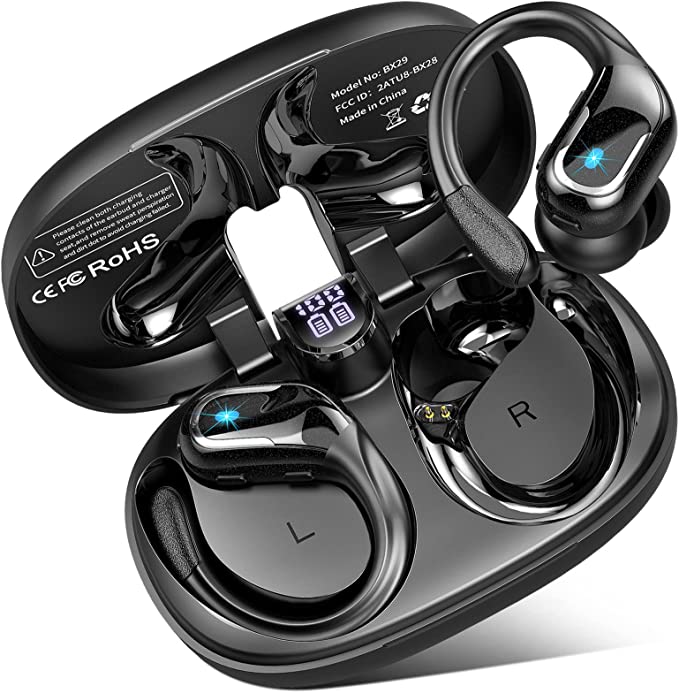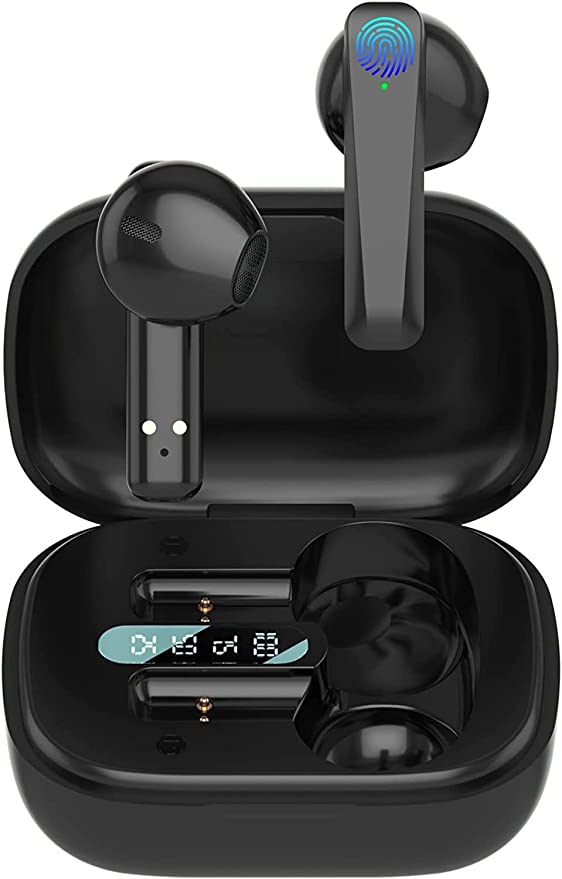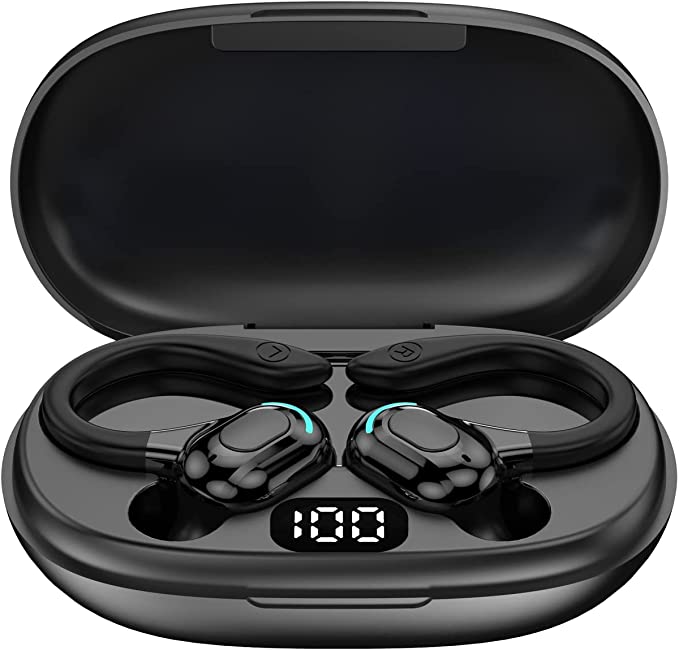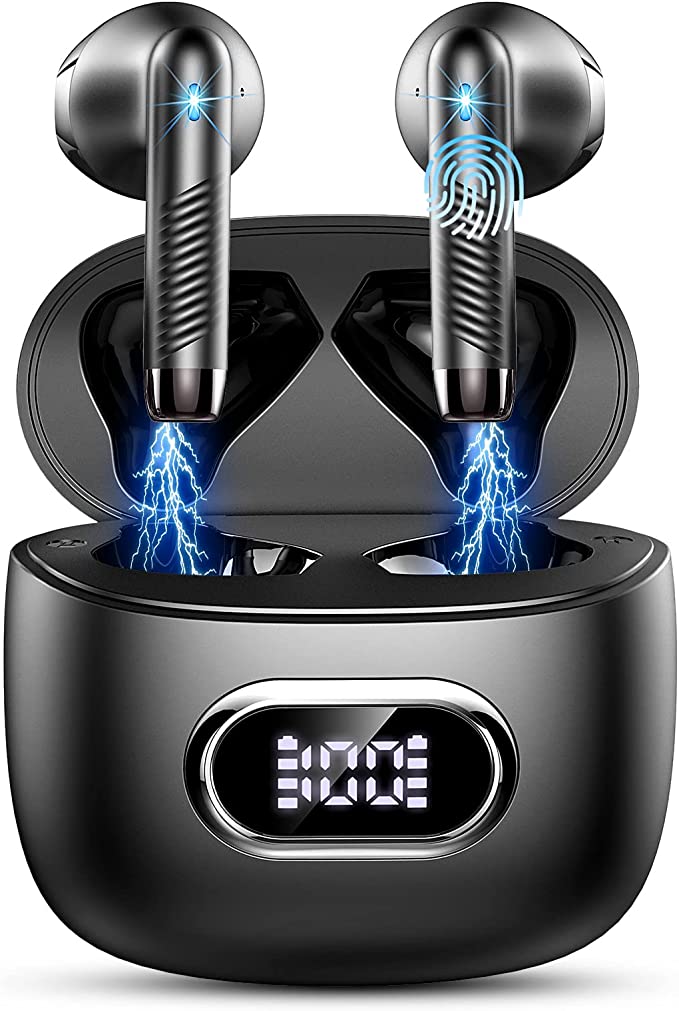TRANYA X5 Earbuds: Bluetooth 5.3, IPX5 & Secure Fit Science Explained
Update on April 13, 2025, 9:14 a.m.
We’ve all been there. You’re in the zone, hitting your stride on a run or pushing through that final set, and suddenly… disaster. An earbud tumbles to the ground, interrupting your flow. Or maybe it’s the dreaded crackle of a failing connection, or worse, the silence of a dead battery just when you needed that power song the most. Finding reliable audio gear that can keep up with an active lifestyle often feels like an endurance sport in itself.
Enter the TRANYA X5 wireless earbuds, a contender in the sports audio arena promising features like a secure ear hook fit, IPX5 water resistance, Bluetooth 5.3 connectivity, and a lengthy 32-hour playtime. But beyond the marketing points, what’s the actual science and engineering that makes these features work (or not)? As someone fascinated by the intersection of technology and human experience, let’s peel back the layers and explore the “why” and “how” behind the TRANYA X5’s design, empowering you with knowledge that goes far beyond this single product.

Defying Gravity: The Engineering of a Secure Fit
The number one complaint about earbuds during exercise? They fall out. It’s physics, really. The repetitive impact of running, the sharp movements of a HIIT class, even just the subtle shifts from intense breathing can conspire with gravity and a bit of sweat to dislodge tiny objects resting in your ear canal.
The TRANYA X5 addresses this fundamental challenge with its ear hook design. This isn’t just an aesthetic choice; it’s applied ergonomics and basic mechanics. Your outer ear, the pinna, provides a natural structure. Standard earbuds rely primarily on fitting snugly inside the ear canal (helped by various tip sizes) and friction. An ear hook adds a crucial second point of contact and support, looping over and behind the pinna.
Think of it like carrying groceries: a loose plastic bag swings wildly, threatening to spill its contents. A well-fitted backpack, however, distributes the weight across your shoulders and back, staying stable even when you move. The ear hook acts similarly to that backpack strap. It creates a counter-force against downward and outward movements, significantly improving stability. It effectively lowers the combined center of gravity relative to the support structure (your ear) and provides a mechanical anchor that simple friction inside the canal cannot match. While other solutions like wingtips or “fins” also aim to improve stability by bracing against the inner folds of the ear, the over-ear hook offers a fundamentally different, often more robust, anchoring mechanism, particularly effective against the vertical shocks common in running.
The practical reality? You spend less time fumbling and readjusting, more time focusing on your form, your pace, your breath. It’s about removing a distraction so you can fully immerse yourself in the activity. Of course, no design is perfect for everyone. The added structure of an ear hook might feel slightly bulkier to some, and compatibility with glasses can vary depending on the hook’s thickness and the glasses’ arms. But for sheer security during dynamic movement, the physics behind the ear hook is sound.

Weathering the Storm (and Your Sweat): Making Sense of IPX5
Exercise means sweat. Sometimes it means getting caught in unexpected rain. Moisture is the enemy of electronics, leading to corrosion, short circuits, and the premature demise of your gear – the dreaded “sweat death.” This is where Ingress Protection ratings, like the IPX5 rating on the TRANYA X5, become critical.
Let’s decode “IPX5.” “IP” stands for Ingress Protection, an international standard (IEC 60529) defining levels of sealing effectiveness against intrusion from foreign bodies (like dust) and moisture. The first digit after IP refers to solid particle protection. The ‘X’ in IPX5 simply means the device hasn’t been specifically tested or rated for dust ingress. It doesn’t mean it has no dust protection, just that it’s not certified for it.
The second digit, the ‘5’, is our focus here – it denotes liquid ingress protection. An IPX5 rating signifies that the device is protected against low-pressure water jets projected by a nozzle (6.3mm) from any direction for at least 3 minutes. Imagine a gentle spray from a garden hose or a faucet turned down low, not a pressure washer.
It’s crucial to understand both the capability and the limitation. IPX5 means the TRANYA X5 earbuds are engineered to handle the sweat dripping during an intense workout or the splashes encountered during a run in light rain. You can exercise with confidence knowing this level of moisture won’t likely cause damage. However, IPX5 is not fully waterproof. It does not mean you can swim with them, shower with them, or submerge them in water. Think of it like a water-resistant watch versus a dive watch – they serve different purposes. For cleaning, a damp cloth is appropriate, but avoid rinsing them under a running tap, especially near the charging port or microphone openings. Understanding this distinction prevents accidental damage and sets realistic expectations.

The Invisible Tether: Why Bluetooth 5.3 Matters for Stability
Wireless freedom is fantastic, until it isn’t. Choppy audio, sudden dropouts, or difficulty pairing can turn that freedom into frustration, especially when you rely on music to power through a tough workout. The TRANYA X5 utilizes Bluetooth 5.3, a relatively recent version of the wireless standard that connects billions of devices worldwide.
So, what does “5.3” actually bring to the table for your listening experience? While Bluetooth versions often tout increased range, for earbuds connected to a phone on your person, massive range isn’t the primary benefit. Instead, Bluetooth 5.3 focuses on refining connection robustness and power efficiency.
Bluetooth works by transmitting data over short-range radio waves in the busy 2.4 GHz spectrum (shared with Wi-Fi, microwaves, and other devices). Interference is common. Bluetooth employs a technique called Frequency-Hopping Spread Spectrum (FHSS), essentially rapidly switching between dozens of channels to avoid interference. Think of it like trying to have a conversation in a noisy room – instead of shouting over the din on one frequency, you quickly hop between quieter spots (channels) to maintain clarity. Bluetooth 5.3 includes enhancements like improved “channel classification,” where the devices get better at identifying and avoiding channels that are likely to be noisy or interfered with. This adaptive hopping makes the connection more resilient, especially in environments saturated with wireless signals, like a modern gym.
Furthermore, Bluetooth 5.3 incorporates features aimed at reducing power consumption. While the specifics are complex, the goal is to allow devices to transmit data more efficiently and spend more time in low-power sleep states without sacrificing responsiveness. This doesn’t just help the earbuds’ battery; it can also mean slightly less drain on your phone’s battery during use.
The payoff for you isn’t a revolutionary leap, but rather a more reliable and potentially longer-lasting connection. Fewer frustrating dropouts when you move, a more stable link even when your phone is in your pocket, and a contribution towards achieving that overall advertised playtime. It’s about refining the core wireless experience for consistency.

Fueling Your Long Haul: Understanding 32H Playtime & USB-C
Battery anxiety is real. Nothing deflates workout motivation faster than seeing that low-battery warning flash. The TRANYA X5 boasts 32 hours of playtime, which sounds impressive for such small devices. How is this achieved?
The key lies in the True Wireless Stereo (TWS) ecosystem: the earbuds themselves hold a charge for a certain number of hours (the exact earbud-only playtime isn’t specified in the provided data, but it’s typically 5-8 hours for similar devices). The charging case acts as a portable power bank, containing its own larger battery. When you place the earbuds back in the case, they automatically recharge. The “32 hours” refers to the total combined listening time you get by starting with fully charged earbuds and a fully charged case, exhausting the earbuds, recharging them from the case multiple times, until the case itself is depleted.
Think of the case as a mobile refueling station. It allows you to go through multiple workouts or days of commuting before needing to find a wall outlet for the case. Inside these devices are typically lithium-ion batteries, chosen for their high energy density (packing more power into a small space) – a crucial factor in miniaturized electronics.
Charging the case itself is done via its USB-C port. This is a significant convenience upgrade from the older Micro-USB standard. USB-C connectors are reversible (no more frustrating fumbling to plug it in the right way up), more robust, and are becoming the universal standard across phones, laptops, and other gadgets, meaning you likely already have compatible cables. The listing also mentions “Fast Charging.” In the context of earbuds, this usually implies that a short charging period (e.g., 10-15 minutes) can provide a significant amount of listening time (e.g., an hour or more). While the exact speed for the X5 isn’t provided, the concept is about minimizing downtime when you realize you’ve forgotten to charge.
This combination of long total playtime via the case and the convenience of USB-C charging (with potential for quick top-ups) directly addresses the pain point of battery anxiety, offering genuine freedom from constant recharging worries for the average user’s weekly routine.
Fingertip Control: Convenience and Caveats
Many TWS earbuds, likely including the X5 (as it mentions “Touch Control”), utilize small touch-sensitive surfaces instead of physical buttons. This allows for a sleeker design and potentially easier control without pushing the earbud further into your ear. Common controls include play/pause, track skipping, volume adjustment, and answering calls, usually activated by taps or holds. The underlying technology is typically capacitive sensing, similar to your smartphone screen, detecting the change in electrical capacitance caused by your finger.
The convenience is undeniable once you learn the tap patterns. However, touch controls can sometimes be finicky. Sweat can interfere with sensitivity, and accidental touches are common during adjustments or even when wiping sweat away, potentially pausing music or ending a call unintentionally. It’s a trade-off between streamlined design and foolproof operation, especially during vigorous activity.

Knowledge is Your Best Gear
Understanding the technology packed into your workout gear, like the TRANYA X5, does more than just satisfy curiosity. Knowing why an ear hook provides stability helps you appreciate its design. Understanding what IPX5 truly protects against sets realistic expectations and guides proper care. Recognizing the stability enhancements in Bluetooth 5.3 explains why your connection might feel more solid. Demystifying total playtime and USB-C highlights practical convenience.
This knowledge empowers you. It allows you to look past marketing buzzwords and evaluate products based on how their underlying science and engineering actually address your needs. While we’ve focused on the TRANYA X5 using the available information, the principles discussed – ergonomics, ingress protection, wireless protocols, battery systems – apply across the board. The more you understand the tech you use, the better equipped you are to choose the right gear to support your goals and enhance your active life.
[//]:(version:20250412 001)
